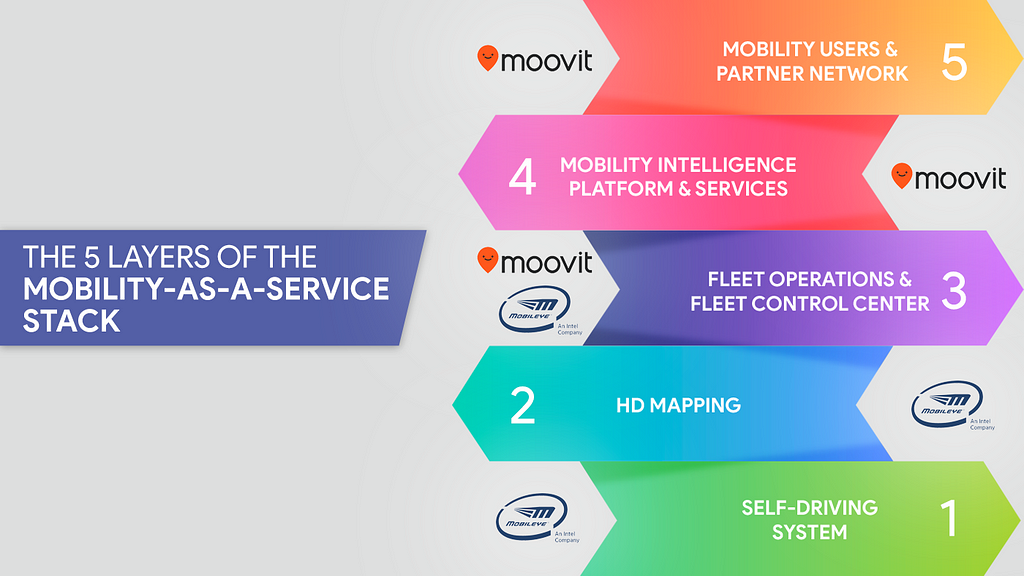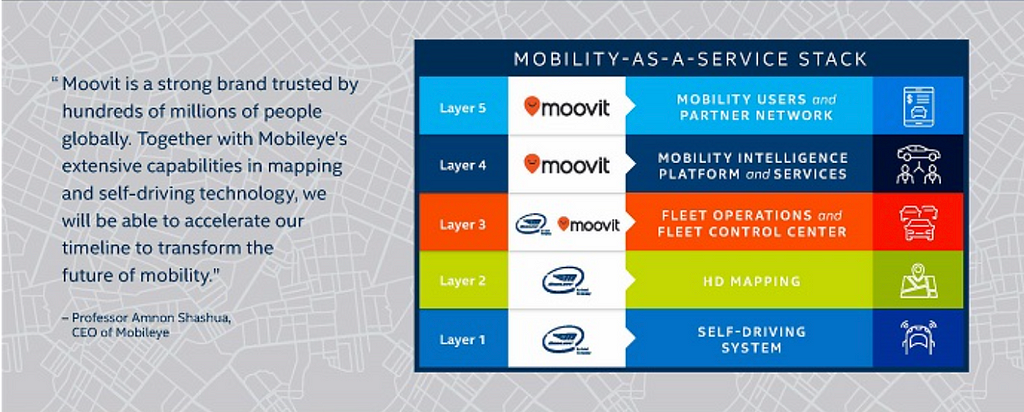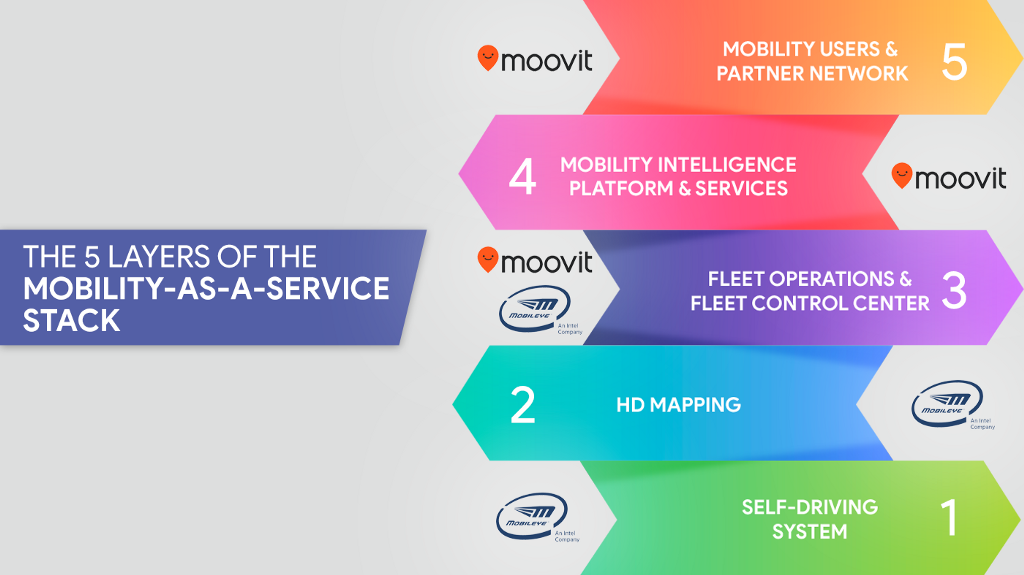
When Intel announced its acquisition of the trip planning app Moovit and its integration into Intel’s Mobileye autonomous driving business; the tech giant revealed a giant-sized ambition to offer a complete “Mobility as a Service Stack.” Here’s what it looks like:
- Layer 1: Self-driving technology
- Layer 2: High-definition mapping
- Layer 3: Fleet operations and control center
- Layer 4: Mobility intelligence platform and services
- Layer 5: Mobility users and partner network
It is important to understand the power of combining these two technologies (or even 5, one per layer). The potential is to have a unified link between mobility supply and demand. Mobileye represents the supply-side of a mobility service by enabling self-driving and/or driver-assisted fleets. Moovit represents the demand side of the business, aggregating bookings and trip planning for Mobileye-equipped fleets.

The Orchestration Dimension
The third layer of the stack, Fleet Operations and Control Center, is where Intel and Mobileye’s vision goes beyond those of automotive and tech companies seeking to become mobility service providers. At Bestmile, we call this layer of the stack fleet orchestration — a centralized control system that coordinates fleet operations, telling vehicles where to go, how to get there, what to do when they get there, and what to do next based on vehicle locations and capacities to maximize the efficiency of the entire fleet.
Bestmile has been developing the technology for this layer for years and are the world leaders in this field. We work with mobility providers that realize that vehicles alone, autonomous or human-driven, don’t constitute an efficient service. The fleet orchestration layer is needed to match supply and demand, sending the right vehicle the right mission at the right time to move more people with fewer cars.
Fleet orchestration is a matter of automating and optimizing the dispatching, ride matching and routing of vehicles in a mobility service. Automation may seem simple when thinking of a single vehicle picking up an individual passenger and taking the passenger from point A to point B. It is anything but simple, however, with large fleets and hundreds or thousands of travelers making requests with different preferences or constraints for ride times, wait times, and more. For example, in a post-pandemic service, travelers may want control over how many people share a vehicle; or they may request a recently cleaned car. All of this happens amid continually changing conditions, including traffic, construction, events, and other real-time variability.
Passenger convenience and operators’ business requirements are constraints that need to be balanced. As we move beyond peer-to-peer mobility service models and cities regain control of their streets, vehicle utilization is critical for the bottom line. Fleets must carry paying customers (or packages) as much of the time as possible, and fleet orchestration gives service providers control over thresholds for vehicle utilization and passenger preferences to provide predictable service levels.
The Next Normal
Intel and Mobileye have recognized the missing link between supply and demand when it comes to mobility services. As we begin to recover from the COVID-19 crisis and more and more cities want to maintain the vast reductions in urban traffic that have taken place, fleet orchestration becomes paramount. Efficiently matching supply and demand enables service providers to do more with less without sacrificing convenience for travelers or revenue for operators by maximizing what operators call passenger miles — miles or km that generate revenue.
A Complete Solution
The Mobileye-Moovit merger promises mobility providers a one-stop-shop for the creation of new mobility services, with Mobileye-guided vehicles booked in real-time via Moovit’s app. The combination marries the supply and demand sides of mobility services. What Intel and Mobileye “get” that others haven’t is that fleet orchestration is needed to optimize services, dynamically matching supply and demand with control over passenger and operator requirements.
Mobileye and Intel Get It: Fleet Orchestration and the Acquisition of Moovit was originally published in Bestmile on Medium, where people are continuing the conversation by highlighting and responding to this story.
